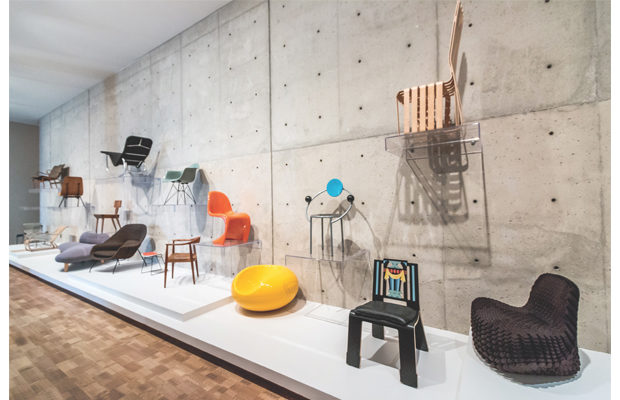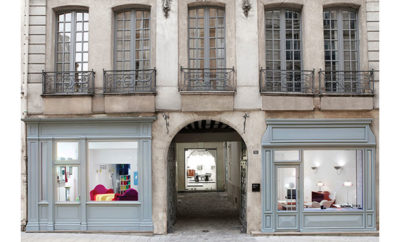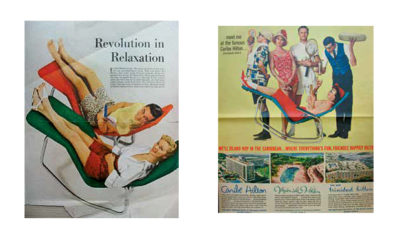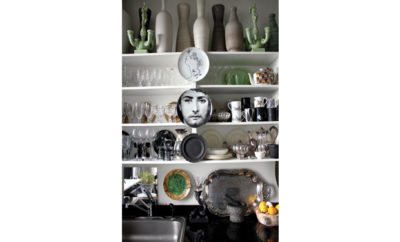 All installation view. Photos by John R. Glembin.
All installation view. Photos by John R. Glembin.
Design
Re-Designing Design
THE MILWAUKEE ART MUSEUM’S CURATOR DISCUSSES HER PROGRESSIVE APPROACH TO SHOWCASING A GROWING COLLECTION OF TWENTIETH- AND TWENTY-FIRST-CENTURY DESIGN
THE MILWAUKEE ART MUSEUM reopened late last year after a $34 million renovation that wonderfully integrates its collections with its buildings—by Eero Saarinen, David Kahler, Santiago Calatrava, and the Milwaukee branch of HGA, which designed the new East End addition. One particularly happy result is that, for the first time, there are now galleries devoted to the museum’s expanding twentieth- and twenty-first-century design collection. These galleries don’t present a chronological master narrative of design—materially and intellectually impossible given design’s global reach. Instead, channeling network theory, they are set up as vignettes that suggest webs of influence and the ways objects relate to one another across time, mediums, and place.
For example, Mathias Bengtsson’s aluminum Slice chair (1999) stands not far from Hans J. Wegner’s 1949 Round chair, representing the legacy of mid-century Danish furniture, and a little ways away is Joris Laarman’s 2015 Soft Gradient chair (from his Micro-structures series). Laarman’s studio made this chair by exploring 3-D printing technology—a digital process that was unavailable to Bengtsson in the late 1990s. The relationships between these works speak to my interest in the associations visitors make when encountering objects and that move them between pieces.

There are, as well, more traditional displays that combine objects from the museum’s areas of strength, with generous loans from local private collectors. For example, as the repository for the George Mann Niedecken Archives, the museum embraces Prairie school material, including several works from Rockledge, the house for Ernest L. King designed by George Washington Maher. A pioneering Prairie school architect, Maher applied what he called his “Motif-Rhythm theory” to the creation of his architectural Gesamtkunstwerks, or total works of art. Each commission, he felt, called for a geometric shape and a natural element to form a motif that would bring harmony to the whole; for the 1912 Rockledge commission he incorporated the tiger lily and a at arch. A dining chair and a chest anchor the museum’s display of furniture from Rockledge, supplemented by a mantel clock, a set of flatware, and and irons, all on long-term loan from generous private collectors.
The museum also possesses the archive of, and a large collection devoted to, Milwaukeean Brooks Stevens, who, along with many of the nation’s leading designers at the time, was a charter member of the Society of Industrial Designers in 1944. This material allowed an installation that examines the process of design—from drawings and maquettes to realized products. The display sits near several areas dedicated to a major focus of the collection—American modern design. A highlight here is a recently acquired cocktail set (c.1928) designed by German immigrant Elsa Tennhardt, and consisting of a cocktail shaker, whose shape alludes to skyscrapers, six cocktail glasses with undulating stems sprouting from triangular bases, and a diamond-shaped, black Vitrolite-topped tray with decorative triangular corners. Tea sets styled by Virginia Hamill and works by other female industrial designers from the period, including Hungarian-born illustrator and industrial designer Ilonka Karasz, surround Tennhardt’s set.

Another key recent acquisition is the only (to my knowledge) extant “old rose”–colored Nocturne radio with original elements. It is one of a collection of radios designed in 1935 by Walter Dorwin Teague for the Sparton Corporation of Jackson, Michigan (another, the Bluebird, is also on view in the design galleries). Unveiled in September 1935 at the National Electrical and Radio Exposition for the 1936 retail year, the Nocturne was available in cobalt or peach (“old rose”) glass and cost the princely sum of $350. It was a luxurious and expensive object likely used in public spaces such as hotel lobbies, rather than domestic settings.
The growing collection of modern American design is supplemented by generous loans, among them a gear table designed for the lobby of Milwaukee’s A. O. Smith Research and Engineering Building in 1929–1930. Constructed of stone, aluminum, and glass, the art deco building designed by Holabird and Root of Chicago, one of America’s largest architectural firms at the time, was considered both modern and efficient, its completely sealed interior maximizing light and space. The table, in aluminum and glass, was emblematic of America’s “Machine Age.”
Visitors to the Milwaukee Art Museum’s design galleries will experience a view of design far beyond the conventional decorative arts—through jewelry, wallpaper, textiles, graphic design, and more, organized in a manner that invites exploration of a range of relationships. To allow visitors to experience the diversity of the museum’s design holdings, I plan to rotate several areas within the galleries on a regular basis—so please visit Milwaukee often!
MONICA OBNISKI is the Demmer Curator of 20th- and 21st-Century Design at the Milwaukee Art Museum.












